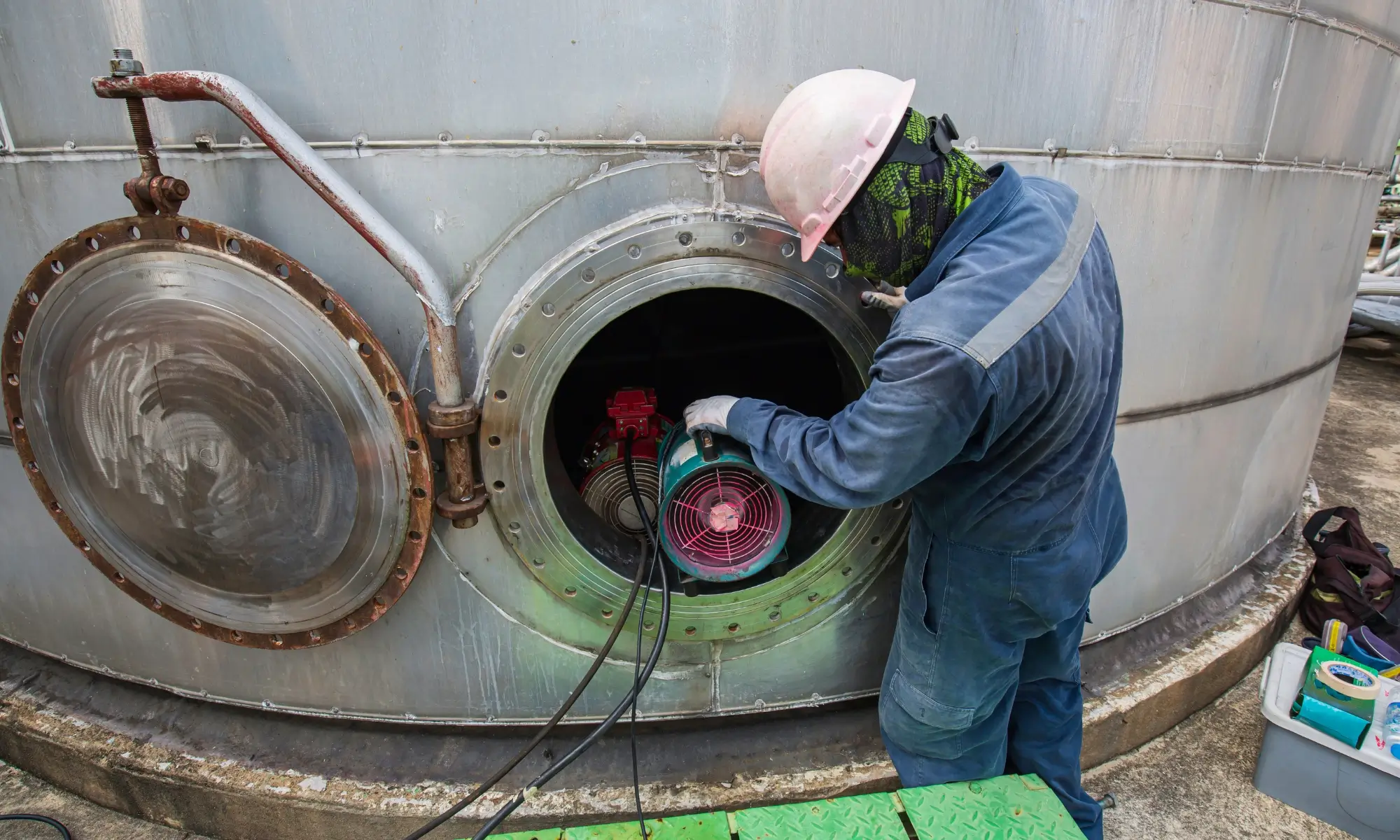Confined spaces pose unique risks that require specialized knowledge and preparation. These areas—like storage tanks, manholes, and silos—are not designed for regular occupancy, yet employees may need to enter them for inspections, repairs, or maintenance. Understanding the hazards associated with confined spaces and the safety protocols to follow can mean the difference between life and death.
This article provides a comprehensive guide on confined space training, outlining essential concepts, requirements, and best practices. Whether you’re a safety manager, employee, or employer, this resource will help you understand what confined space training entails and why it is non-negotiable for workplace safety.
What Is a Confined Space?
A confined space is any area that is not intended for continuous occupancy, has limited entry and exit points, and presents safety hazards. Examples include:
- Storage tanks
- Sewer systems
- Boilers
- Utility vaults
- Pipelines
These spaces often involve poor ventilation, increasing the risk of toxic gas buildup, oxygen deficiency, or flammable gases.
Why Confined Space Training Matters
Confined spaces are dangerous by nature, often concealing risks such as toxic atmospheres, engulfment hazards, and limited oxygen levels. Statistics show that many confined space accidents result from inadequate training or failure to follow safety protocols.
Proper training helps employees:
- Identify confined space hazards.
- Understand how to use personal protective equipment (PPE).
- Follow entry and exit procedures safely.
- Respond effectively to emergencies.
Confined space accidents not only endanger lives but can also result in severe legal and financial consequences for companies.

Key Components of Confined Space Training
Confined space training is essential for ensuring the safety and preparedness of employees working in hazardous environments. The following ten key components provide a holistic approach to equipping workers with the knowledge and tools they need to navigate confined spaces safely.
1. Understanding the Hazards
Employees must recognize and understand the various risks associated with confined spaces:
- Atmospheric Hazards: Presence of toxic gases (e.g., hydrogen sulfide, carbon monoxide) or oxygen-deficient environments.
- Engulfment Hazards: Risks like being submerged in liquids or materials (e.g., grain or sand) inside confined spaces.
- Physical Hazards: Limited visibility, sharp edges, low ceilings, and constrained movement increase the likelihood of injury.
2. Use of Gas Detectors and Monitoring Equipment
Gas detectors are vital for assessing atmospheric safety. Employees should learn to:
- Calibrate the equipment accurately before use.
- Interpret gas readings and act promptly when levels become unsafe.
- Understand the limitations of specific detectors and know when additional monitoring devices are required.
3. Personal Protective Equipment (PPE) and Tools
Proper PPE protects workers from exposure to hazards. Training covers:
- Respirators to prevent inhalation of toxic gases.
- Safety harnesses and lifelines for fall protection.
- Chemical-resistant suits for exposure to hazardous substances.
- Portable lighting like headlamps to improve visibility.
4. Permit-to-Work System
Permit-required confined spaces demand additional documentation and controls. Employees learn:
- When and why permits are needed for entry.
- How to fill out permits accurately and submit them for approval.
- The responsibilities of entry supervisors, attendants, and entrants during the process.
5. Emergency Procedures and Rescue Techniques
Even with precautions, emergencies can occur. Training ensures workers can:
- Develop and rehearse emergency response plans tailored to specific confined spaces.
- Use retrieval equipment such as tripods and winches to extract individuals.
- Coordinate with emergency responders to ensure timely rescue efforts.
6. Roles and Responsibilities of Entry Teams
Each confined space operation involves multiple roles, and employees need to understand:
- Entrants: Responsible for completing tasks inside the space while maintaining communication with attendants.
- Attendants: Monitor conditions from outside and initiate rescue if necessary.
- Supervisors: Ensure the entire process follows safety protocols and authorize entry.
7. Atmospheric Testing and Continuous Monitoring
Training emphasizes the importance of pre-entry atmospheric testing and continuous monitoring throughout the job. This helps employees:
- Verify that the space is free from dangerous gases or oxygen deficiency before entering.
- Monitor environmental conditions during the operation to detect changes.
- Know when re-evaluation is required if conditions change or equipment is introduced.
8. Lockout/Tagout (LOTO) Procedures
Lockout/tagout procedures prevent accidental startup of machinery or release of hazardous energy while working in confined spaces. Training includes:
- Identifying and isolating energy sources.
- Applying locks and tags to equipment to prevent activation.
- Verifying that all systems remain de-energized during the operation.
9. Communication Systems
Maintaining clear communication between entrants and attendants is crucial for safety. Training covers:
- Selecting appropriate communication devices, such as radios or wired systems, for the confined space environment.
- Establishing clear communication protocols to relay instructions or raise alarms.
- Ensuring backup systems are available if primary communication fails.
10. Health and Fitness Requirements
Employees working in confined spaces must be physically and mentally prepared for the challenges. Training highlights:
- The importance of pre-entry health assessments to ensure workers are fit for duty.
- Recognizing signs of heat stress, fatigue, or panic that could impair judgment.
- Following guidelines for rest breaks and hydration during long or physically demanding tasks.
By covering these ten essential components, confined space training ensures that employees are not only aware of potential hazards but are also equipped to handle them effectively. This comprehensive approach enhances both individual safety and operational efficiency, fostering a safer workplace for everyone involved.

Who Needs Confined Space Training?
Employees who work in, or supervise entry into, confined spaces must complete appropriate training. This includes:
- Entrants: Workers who physically enter the space.
- Attendants: Individuals stationed outside the space to monitor conditions and communicate with entrants.
- Supervisors: Personnel responsible for authorizing entries and ensuring all safety protocols are followed.
Periodic refresher training is essential to maintain competency and stay updated on the latest safety standards.

Regulatory Requirements for Confined Space Training
In the U.S., the Occupational Safety and Health Administration (OSHA) sets the standards for confined space safety. OSHA’s 29 CFR 1910.146 mandates that employers:
- Provide confined space training to all relevant employees.
- Maintain training records.
- Ensure that employees understand and can apply the training.
- Implement a permit-required confined space program if necessary.
Failing to comply with OSHA’s regulations can result in fines, penalties, and heightened liability risks.

Confined Space Training Certification: What to Expect
Confined space training programs typically consist of:
- Classroom Learning: Covers theoretical concepts, OSHA regulations, and case studies.
- Hands-on Practice: Involves practical exercises like using gas detectors, donning PPE, and setting up retrieval systems.
- Assessment and Certification: Participants complete a written test and practical evaluation to receive certification.
Certification ensures that employees are fully equipped to work safely in confined spaces and understand their roles during emergency situations.
Conclusion
Confined space work is inherently hazardous, but with proper training, employees can mitigate risks and work safely. From hazard identification to emergency response, confined space training equips workers with the knowledge and skills they need to stay safe.
Employers should prioritize confined space training not just to comply with OSHA regulations, but to protect their workforce and reduce the risk of accidents. Remember, safety is an investment—well-trained employees are not only more confident but also more efficient in handling confined space operations.

